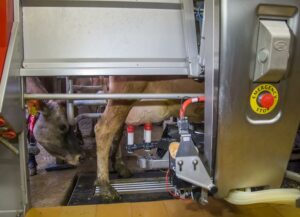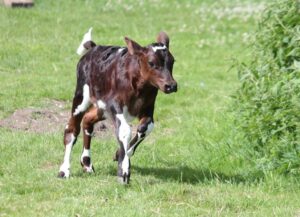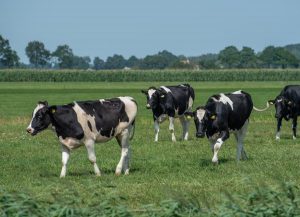Andrés Haro & Alvaro Garcia
Farmers have been using clay as a feed additive in dairy cow diets for quite some time, both to reduce aflatoxin toxicity and rumen acidosis. Clay buffers rumen pH thanks to its high ion exchange capacity, leading to reduced acidification of the rumen contents which improves fiber degradability.
A recent study (Hollis et al., 2020) evaluated the effects of clay inclusion on in situ ruminal degradability in lactating dairy cows. Cows were fed three forage-based dietary treatments with the addition of 0, 10 and 20 g/kg of clay. Grass hay, wet brewer’s grains and soybean meal were incubated in cannulated cows at time intervals to determinate in situ degradability.
The following was observed:
- The inclusion of 10 g/kg of clay increased the solubility and effective degradability of DM of grass hay and soybean meal compared to 0 and 20 g/kg of clay in the diet.
- The degradable fraction of wet brewer’s grains increased with the concentration of clay (5.9, 6.6 and 7.6 g/kg DM, respectively), while the effective degradability of DM decreased concomitantly (4.4, 4.1 and 3.1 g/kg DM, respectively).
- Saturated fatty acid digestibility in grass hay increased with the concentration of clay (3.4, 7.8 and 9.1 g/kg DM, respectively) while the undigested fraction and fractional rate decreased concomitantly (0.07, 0.03 and 0.01 g/kg DM, respectively).
- Soluble saturated fatty acids in wet brewer’s grains decreased as the concentration of clay in the diet increased (0.8, 0.4 and 0.3 g/kg DM, respectively), and the fractional rate of monounsaturated fatty acids was less when 10 g/kg of clay was added to the diet compared to 0 and 20 g/kg.
- The digestible fraction of corn silage total fatty acids decreased (3.3 and 4.5 g/kg DM, respectively) when clay was included at 10 and 20 g/kg compared to 0 g / kg (7.3 g/kg of DM) in the diet.
In conclusion, the inclusion of up to 10 g/kg of clay in the diets for dairy cows improved the degradability of DM of the feed. Additional benefits could be considered, such as a reduction of rumen acidosis, and potential for aflatoxin toxicity.
Reference
Hollis, M.E., Pate, R.T., Sulzberger, S., Pineda, A., Khidoyatov, Y., Murphy, M.R., Cardoso, F.C. 2020. Improvements of in situ degradability of grass hay, wet brewer’s grains, and soybean meal with addition of clay in the diet of Holstein cows. Animal Feed Science and Technology. 259: 114331.
© 2020 Dairy Knowledge Center. All Rights Reserved.






